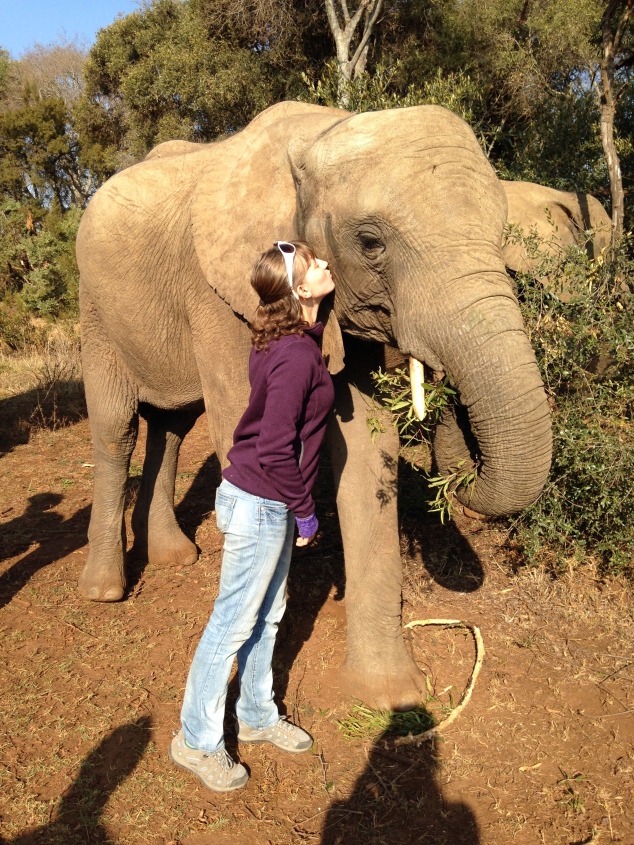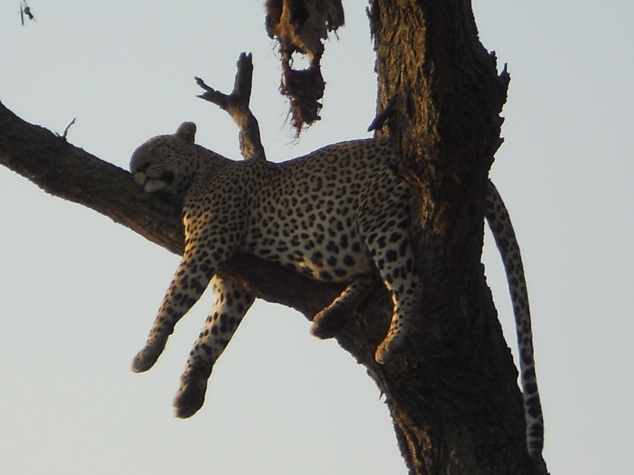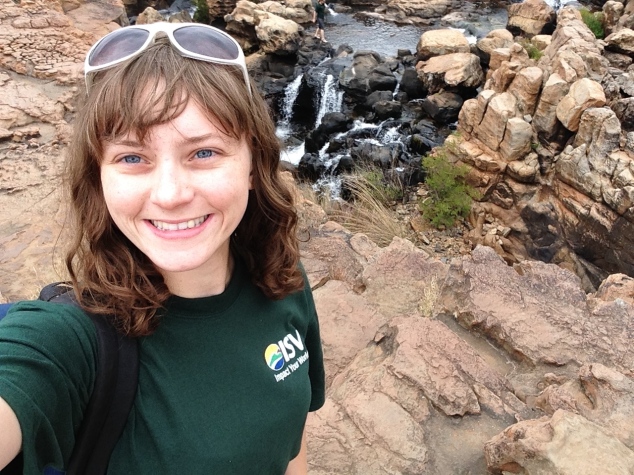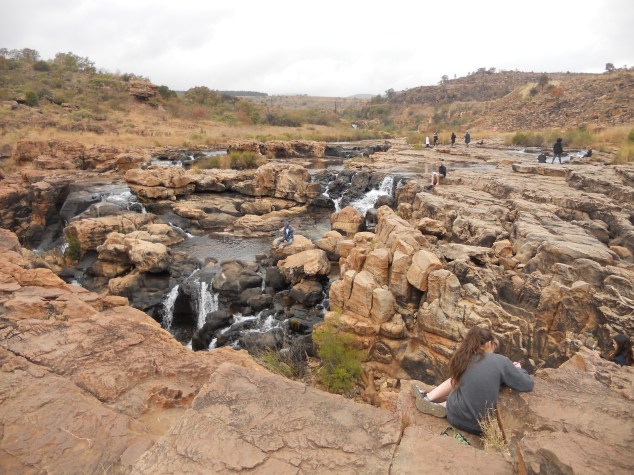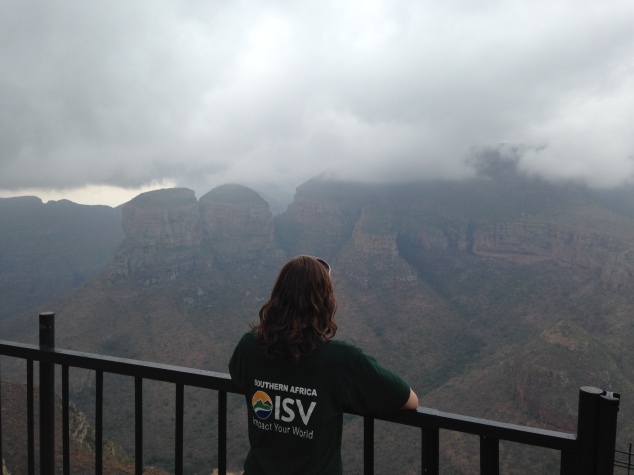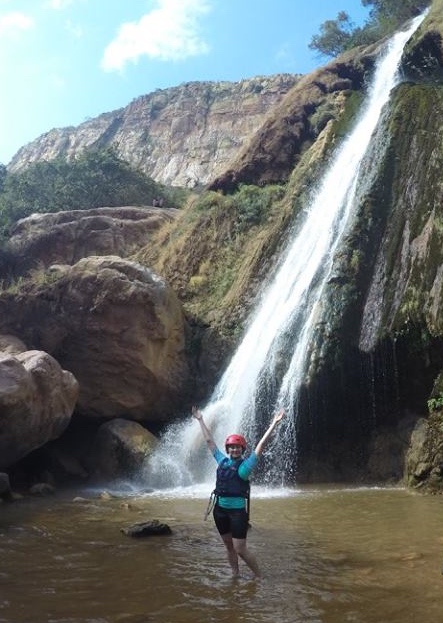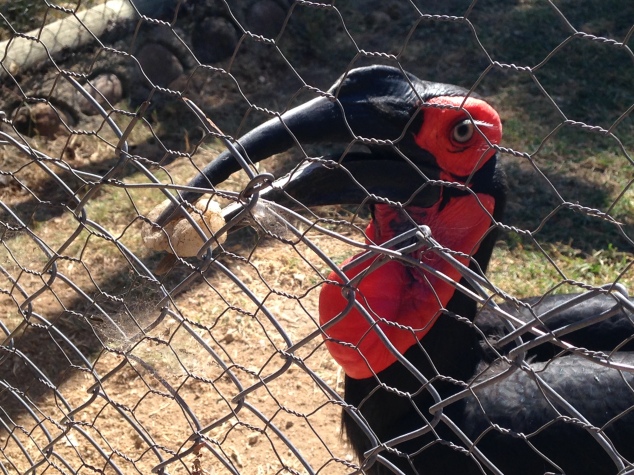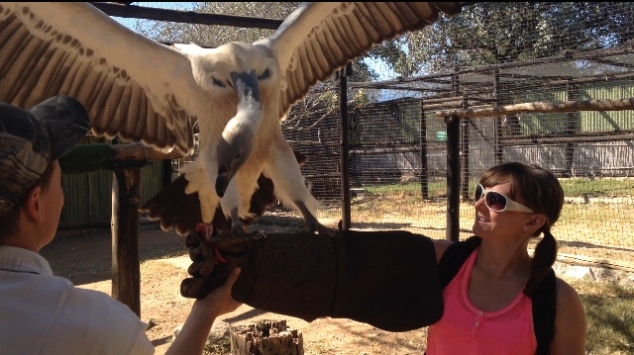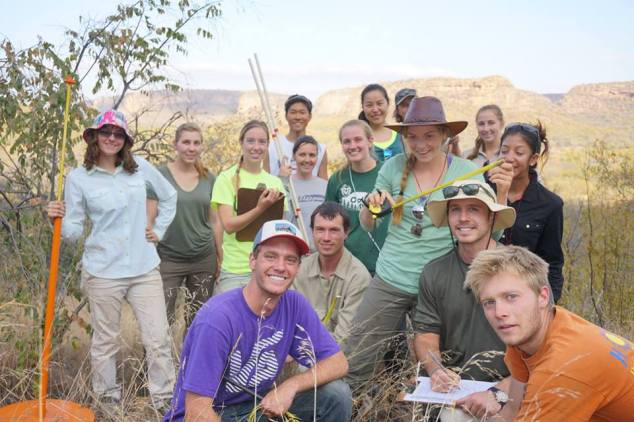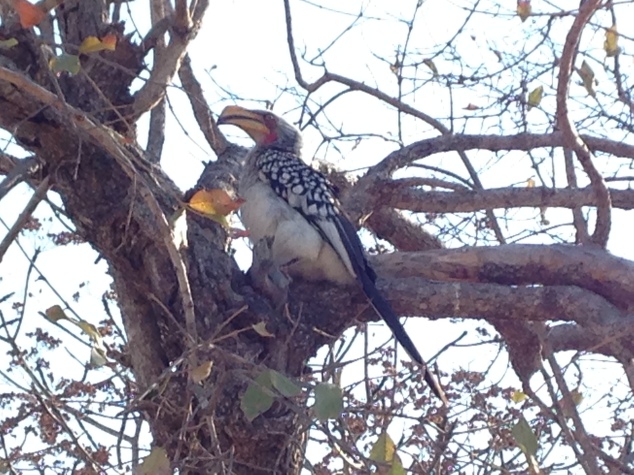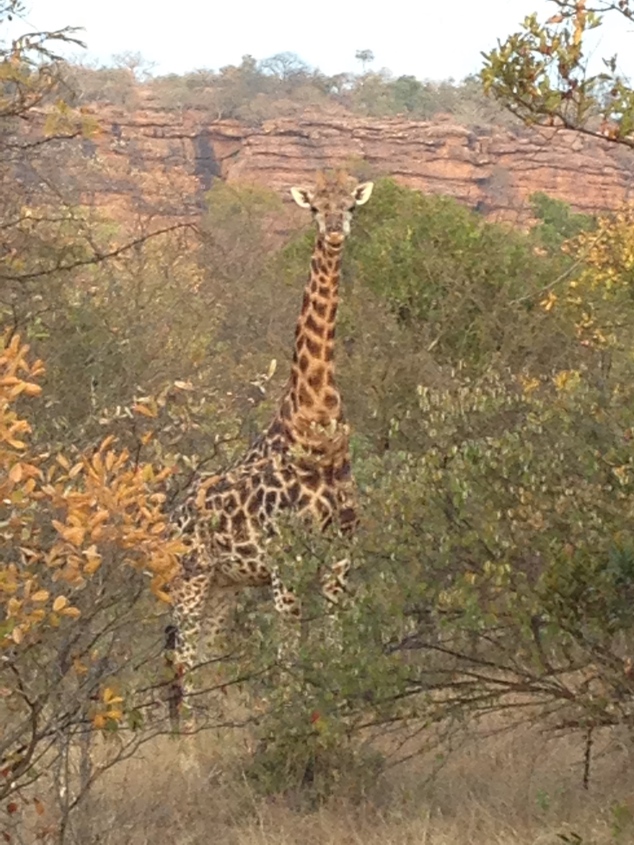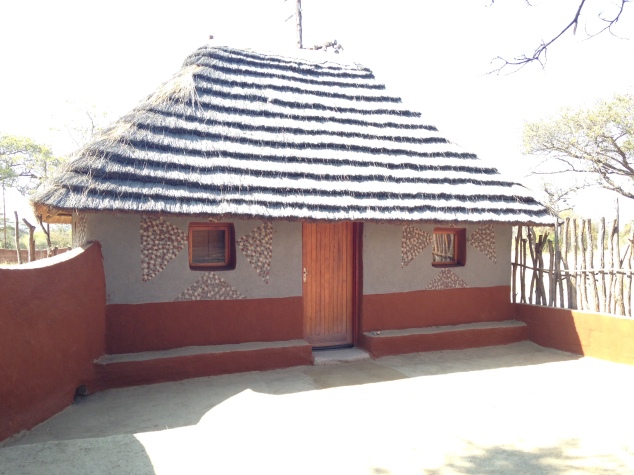Hello again! As promised, here is part 2 of my African adventures. I’m just going to pick up where we left off and jump right in.
Now that we’ve gotten through the volunteer weeks in part 1, let’s talk about the adventure tour, shall we? I won’t give you every detail on account of the fact that this post would take about 6 weeks to read if I did. But, I promise to give you the highlights.
The first few nights of the adventure tour we stayed at a place called Glen Afric, just about 40 minutes away from Johannesburg. Glen Afric is a lodge that is also home to a lot of awesome animals. They have a few different housing options, but I and a friend were in one of the “tents”. Now, I use the term “tent” very lightly because they were ridiculously fancy tents. I mean, we had a bath tub and a toilet. But the coolest thing about the tent was that there were zebras and giraffes roaming around outside of our tent. Oh, and monkeys too – though I only ever heard them and never actually saw them. I was so excited when I woke up the first morning and walked outside to see a giraffe standing just a few meters away. Heaven for Delaney.
Anyway, I’m getting off track. The first activity of our adventure tour was an “elephant encounter” at our accommodation. While some of the more harmless animals, such as the giraffes and zebras, got to wander around freely, others were kept in a nearby area but slightly farther away from guests to give everyone peace of mind. The elephants were one of these animals. Now, don’t think that they were in a tiny zoo enclosure though – I promise that they still had lots of room to roam around. They had 3 elephants that had been transported to Glen Afric because of rehabilitation reasons. I’m not sure of the exact stories for why they were there, but I know that for one reason or another they couldn’t take care of themselves in the wild so they are now happily living their lives in Glen Afric. There are a few workers that are a bit like zoo keepers that take care of them, and occasionally they let people come in to see the elephants. While we were there the workers stayed close so that they could tell us if we needed to back away for any reason, so it was very safe. We got to pet the elephants and even feed them and it was so amazing! In case you were wondering, the skin on the back side of the ear of an elephant is super soft and feels really cool. One of my favorite moments was when I was holding out a branch to one of the elephants for it to eat the leaves and it wrapped its trunk all the way around my leg before reaching up for the food. There was one adult elephant named Three and two babies named Hannah and Marty. Don’t be fooled by the term “baby” though, they’re still huge even when they are three years old. The elephant encounter gave me a newfound love for elephants and I’m now even more obsessed with them. Below you will find a picture of me kissing one of the babies, one of my personal favorite pictures of the whole trip.
Our next stop on the adventure tour was Kruger National Park. We went on two drives around the park – a morning/afternoon drive and a night drive. The very first animal we saw was a cheetah, which was super exciting because they are the second rarest animal to see in the park! Between the two trips we also got to see all of the Big 5, which was totally awesome. They were all pretty amazing, and we were all especially excited to see rhinos since they are becoming more and more scarce with poaching issues. However, I would be failing as a blogger if I didn’t tell you specifically about the leopard we saw. When we went out for our night drive we were all really hoping to see a leopard because it was the only one of the Big 5 that we hadn’t yet seen, little did we know just how lucky we were going to be! About 20 minutes into our drive we thought we spotted a leopard so we stopped the vehicle to see if we could sneak another look. A few minutes later we saw not a leopard, but a hyena, pop out from a patch of tall grass. He wasn’t quite as exciting as a leopard, but we stuck around to watch him for a bit anyway because he was still pretty cool. As we watched, we realized that he was following something… a leopard! The leopard emerged from the tall grass where we could see him and climbed up a tree, where he had previously hung a warthog carcass. He sat down in the tree next to his kill and quickly went to sleep, while the hyena sat at the bottom of the tree and longingly looked up at the carcass, waiting and hoping for it to fall. The leopard had quite literally stuffed his stomach, check out his belly in the pictures I got! You can also see a bit of the carcass hanging above him. We were so lucky to see this, it was a truly remarkable sighting.
The next stop on our trip was the Blyde River Canyon. However, we took the long drive there so that we could make a few stops and see some sights. Our first stop was at a place called the “potholes”. We stayed here for about an hour and I spent about half of my time wandering around and exploring the beautiful area, and the other half enjoying the sound of the rushing water as I journaled. We were basically surrounded by little miniature waterfalls and some super pretty scenery. It was a very peaceful place, the type of place that you would go just to sit down and read a book. In this first picture you can see me exploring the potholes, and the second one shows all of the ISV participants relaxing among the beauty of it all.
Our other quick stop on the way to Blyde River Canyon was at a place called Honeymoon Rock. This is apparently the third largest canyon in the world, but the first largest canyon WITH vegetation. It’s called Honeymoon Rock because there was a couple that honeymooned there and got thrown off the rock by the wind… so as you can see, there are now fences around it to keep history from repeating itself. The view was stunning and the scenery was equally as beautiful as the potholes!
After our Honeymoon Rock stop, we then made our way to Blyde River Canyon! One of my favorite activities of this part of the trip, much to my surprise, was cliff jumping! Well, technically we went kloofing and cliff jumping was only a portion of the activity. “Kloofing” basically consists of hiking around on a mountain and occasionally jumping off cliffs into water. There were 4 jumps overall and each one was higher than the last, the largest being 11 meters, which is about 36 feet. This activity definitely challenged me to face my fears, but once I got myself to jump I was so glad I did! I even chose to do the 11 meter jump multiple times! The water was ridiculously cold, but luckily the first jump was just 1 or 2 meters tall so it was mostly a warmup jump to get us used to the water. Not only was the jumping fun, but the view was absolutely stunning as well. While we hiked around on the mountain we overlooked a huge valley and it was absolutely beautiful. It was postcard-picture worthy. In the below picture you can spot me braving the freezing cold water of the waterfall during one of our quick breaks on our way up the mountain.
The other activity in the Blyde River Canyon that I just can’t stop myself from talking about was our visit to the Moholoholo Rehabilitation Center. We were given a tour of the center and we learned a lot about the various animals. The center takes in injured animals or animals that simply can’t take care of themselves in the wild for one reason or another. The hope is that they can rehabilitate the animals and eventually release them back into the wild, but some of their animals are there permanently because they simply won’t ever be able to survive on their own. That concept is a bit sad, but it also makes me happy that places like Moholoholo exist so that the animals can at least live a happy life within the center. Most of the animals in the center were there for one of two reasons. One of these reasons is that they had been injured by snare traps. The other is that humans had taken in a wild animal and tried to keep it as a pet, realized it wasn’t going to work, and took it to the rehabilitation center because the animal was no longer able to take care of itself in the wild since it had become dependent on people.
There was one specific bird at Moholoholo that had a particularly interesting story. This guy is a Southern Ground Hornbill. In the hornbill world, a male will pick up a rock or a leaf or something of that nature in its beak, present it to a female, and if she takes it they are immediately mates for life. However, this particular hornbill was a pet to humans for the majority of its childhood and imprinted on humans. Because he never had any contact with other birds for the first part of his life, the center has to keep him in his own enclosure because he literally tried to kill the other hornbills that they originally housed him with. As a result of his human-dependent life, he presents a rock to almost every female human that walks by. Poor little guy just wants someone to love him.
At the rehabilitation center I also had the pleasure of petting a cheetah and an eagle, and feeding a leopard-faced vulture. Petting the cheetah was basically like petting a giant cat because, well, that’s exactly what it is. Except that while petting it, it was almost like I could feel its strength. I know that sounds really strange, but I could see how incredibly developed its leg muscles were. I can definitely see why they’re the fastest land animals.
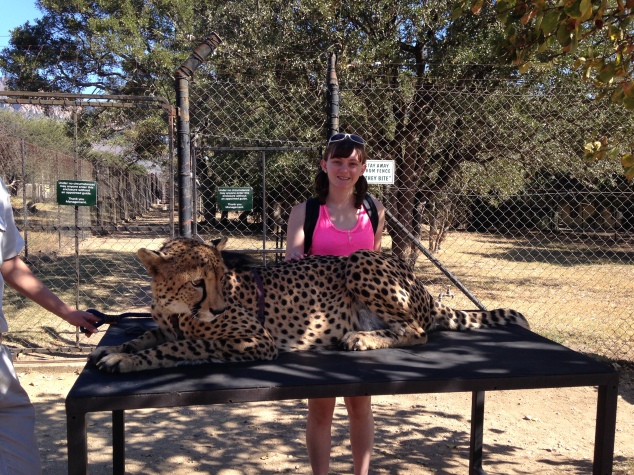
While the cheetah’s fur felt about how I expected it to, the eagle was very different than I thought it would be. The feathers on the back of it’s neck were actually SUPER soft. And he seemed so much bigger than I ever expected him to once I was standing right next to him!
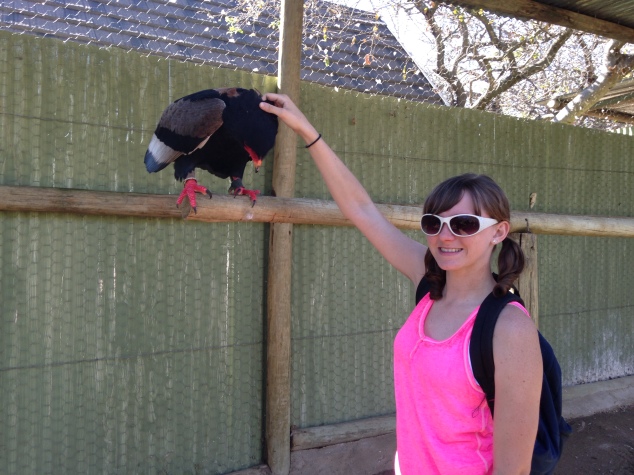
Now onto the vulture! You wouldn’t believe how heavy this guy was, you can tell from the picture that the tour leader literally had to help me hold my arm up because I couldn’t support him all by myself! As you can see, when his wings were fully expanded they went way over my head due to their huge size. Due to my vegetarian ways I kind of had to block the fact that I was holding raw meat in my hand out of my mind. But hey, another fear conquered, right?
Well, I’ll tell you all about Swaziland and Mozambique in part 3 soon! Thanks for listening bugs, stay tuned! 🙂
Love,
Laney-Bug ❤


